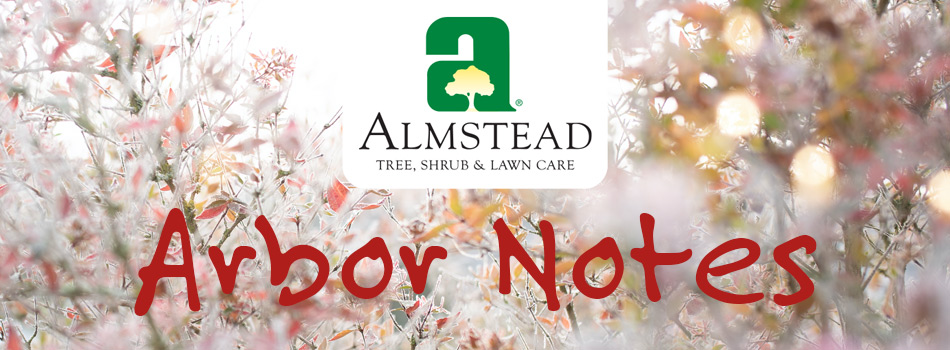The science of preserving nature since 1964
A new pest may be in our landscapes soon...
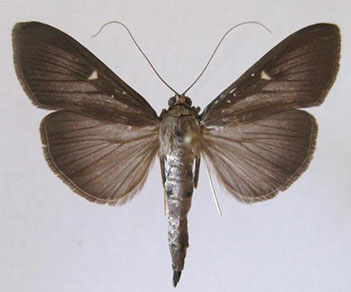
Box Tree Moth (BTM) is an invasive pest that can kill boxwood plants. The insect is native to East Asia, but it has been detected in Western New York in July 2021. It is now found in Connecticut, Massachusetts, Michigan, Ohio, Tennessee, and South Carolina and scientists believe it will only be a matter of time before it is in our neighborhoods.
Caterpillars (larvae) of this pest feed primarily on boxwoods (Buxus spp.) and will defoliate host plants, causing serious plant decline and death when infestations are heavy. Plant symptoms can include green-black frass and unsightly webbing/silk threads on the host plant. Box tree moth (BTM) larvae have also been observed moving onto bark feeding after the host plants’ leaves are gone, causing girdling and plant death.
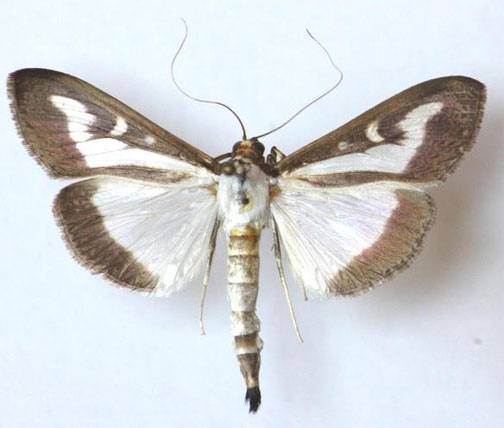
Adult BTM -
white wings
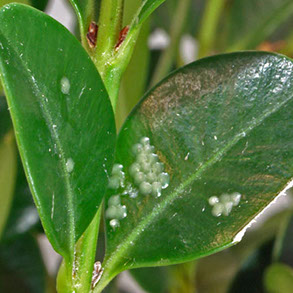
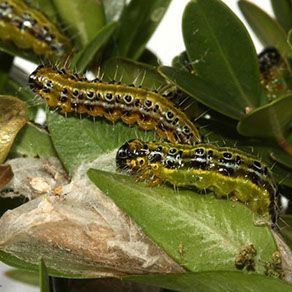
BTM Eggs
BTM Larvae
Adult BTM - brown wings
Adult Box Tree Moths generally have white bodies with a brown head and abdomen. Their wings are white and slightly iridescent, with an irregular thick brown border spanning 1.6 to 1.8 inches. Some adults have completely brown wings with a small white streak on each fore wing. Males and females show both colorations. The eggs are pale yellow and average 0.04 inches in size. They are laid in flat clusters of about 5 to 20 on the underside of boxwood leaves.
As they mature, a black spot appears marking the larval head. Newly hatched larvae have black heads and are green to yellow in color. As they age, dark brown stripes develop on the body. The most mature larvae are about 1.6 inches long and have thin, white and thick black stripes and black dots outlined in white along the length of the body. Pupae develop inside a silk cocoon and are 0.6 to 0.8 inches long. They are initially green, with black stripes on the back, and turn brown as they mature.
Signs of damage (see comparision below) may not appear at the beginning of an infestation because young larvae hide among twigs and leaves. Larvae skeletonize the leaves and feed on the bark, causing defoliation and dryness, leading to the plant’s death. Signs of feeding include green-black frass (excrement) and webbing. The female moths lay their eggs on the underside of the leaves of boxwoods.
If you have Boxwood on your property, please schedule a visit from your Almstead arborist for signs of BTM eggs, larvae, pupae, and adults. Removals or treatments may be needed to protect your Boxwood shrubs.
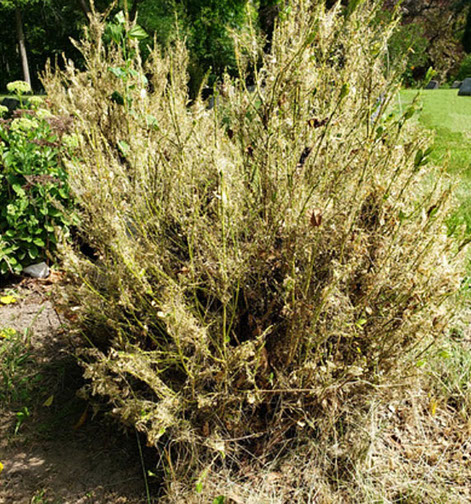
Box Tree Moth damaged Boxwood shrub
Healthy Boxwood shrub
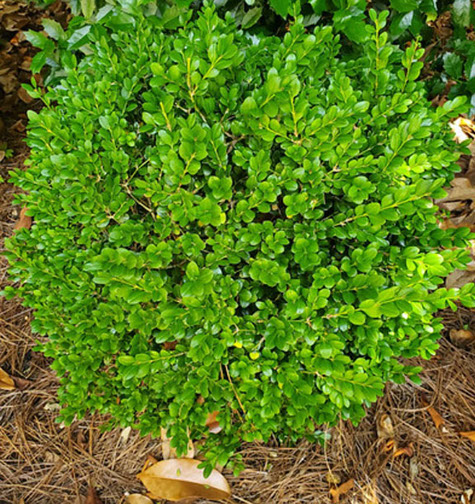

LOCATIONS:
Lower Westchester County, NY and New York City
58 Beechwood Ave, New Rochelle, NY 10801
914-576-0193
Upper Westchester (North of I-287)
15 Broadway, Hawthorne, NY 10532
914-741-1510
Fairfield County, Connecticut
547 Hope Street, Stamford CT 06907
203-348-4111
Bergen & Passaic Counties, NJ
504 High Mountain Road, North Haledon, NJ 07508
973-636-6711
Contact us for a Free Consultation
